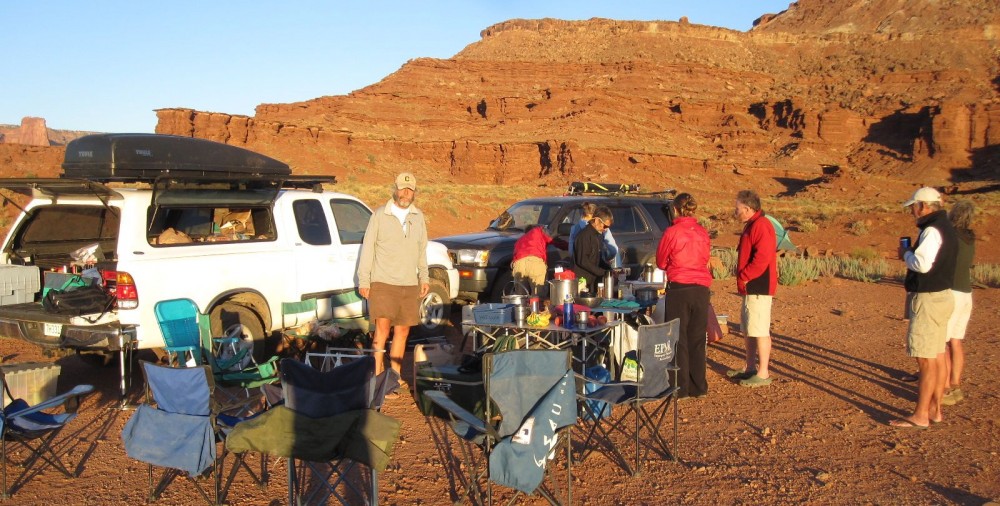
 Having visited a number of SE Asian weaving sites and villages, this was one of the most remarkable in production and craftsmanship. Not only did they have the most weavers demonstrating in a single shop, but the variety of materials (silk, cotton and lotus), patterns and techniques were fun to see.
Having visited a number of SE Asian weaving sites and villages, this was one of the most remarkable in production and craftsmanship. Not only did they have the most weavers demonstrating in a single shop, but the variety of materials (silk, cotton and lotus), patterns and techniques were fun to see.
We ended up taking more video than still photos, so we’ll be eager to show the various flying shuttle looms in action. We have never gotten our flying shuttle on the loom at home to operate as smoothly and effortlessly as on these primitive looms. (It is alway interesting to see how similar our Swedish Glimakra is to these timeless, rudimentary looms.) We even took one slow motion video of a man using two alternating shuttles on a flying mechanism, rotating the shuttles with each pick of the weft, quite a feat with the flying shuttles. He was so quick it was hard to see in real time.
 When we entered this 2-story stilted workshop above the Inle Lake waterways, the first thing we were shown the process of extracting yarn from lotus stems. At a low wooden table ladies were pulling 20″ strands from the stems and rolling with a flat-palm motion to combine the gossamer strands that don’t even show up in a photograph into visible yarn. Later one lotus scarf jumped into our purchase pile and will be winging its way home to Durango with us, we couldn’t pass up such a unique fabric.
When we entered this 2-story stilted workshop above the Inle Lake waterways, the first thing we were shown the process of extracting yarn from lotus stems. At a low wooden table ladies were pulling 20″ strands from the stems and rolling with a flat-palm motion to combine the gossamer strands that don’t even show up in a photograph into visible yarn. Later one lotus scarf jumped into our purchase pile and will be winging its way home to Durango with us, we couldn’t pass up such a unique fabric.
What was so fun was being able to stand over the various weavers’ shoulders on our self-guided tour thru their airy 2nd-floor workroom which had probably 15-20 looms. Each of these looms was loaded with much longer warps than we usually attempt on our Glimakra; pictured here was one of the grand old ladies measuring a 24-strand multi-colored warp that could have been 40-meters long. We saw ladies using spinning wheels to load bobbins for weaving the warp; we didn’t see any local spinning of yarn other than rolling the lotus. The retail shelves were filled with locally handwoven textiles in Inle Lake traditional patterns, Shan district traditional patterns, and other decorative weaves.
 In the same village we visited one of the purely tourist-y demonstrations: in the front of that
In the same village we visited one of the purely tourist-y demonstrations: in the front of that  stilted shop were 5 transplanted long-neck indigenous women wearing their coiled golden necklaces. They had several 8″ and 9″ tall necklaces for demonstration purposes, weighing 8 kilos of coiled metal. Three ladies were weaving on backstrap looms. The two older women were clearly live mannequins sitting stoically, employed for photo opportunities for tourists. (See top photo)
stilted shop were 5 transplanted long-neck indigenous women wearing their coiled golden necklaces. They had several 8″ and 9″ tall necklaces for demonstration purposes, weighing 8 kilos of coiled metal. Three ladies were weaving on backstrap looms. The two older women were clearly live mannequins sitting stoically, employed for photo opportunities for tourists. (See top photo)
 Last stop was at the silversmiths It was most fascinating to see the silver smiths working, one pounding out a 9″ flat disk to be later shaped into a mug-sized bowl, and the other operating his torch. The fine gassed blowtorch was a foot-powered bellows vaporizing gasoline from a pint-sized antique cylinder. This particular craftsman was working on very minute silver coils which he was shaping to later cut and form into
Last stop was at the silversmiths It was most fascinating to see the silver smiths working, one pounding out a 9″ flat disk to be later shaped into a mug-sized bowl, and the other operating his torch. The fine gassed blowtorch was a foot-powered bellows vaporizing gasoline from a pint-sized antique cylinder. This particular craftsman was working on very minute silver coils which he was shaping to later cut and form into  links for a silver chain necklace or bracelet, or to coil around a piece of jade or other jewel. In that second-story rickety workshop and sales area they had more silver jewelry inside of wobbly glass showcases than you might see in an American mall jewelry store. Fun to see the intricate work and craftsmanship but we are more partial to our local silversmith and jeweler Carol Martin.
links for a silver chain necklace or bracelet, or to coil around a piece of jade or other jewel. In that second-story rickety workshop and sales area they had more silver jewelry inside of wobbly glass showcases than you might see in an American mall jewelry store. Fun to see the intricate work and craftsmanship but we are more partial to our local silversmith and jeweler Carol Martin.








